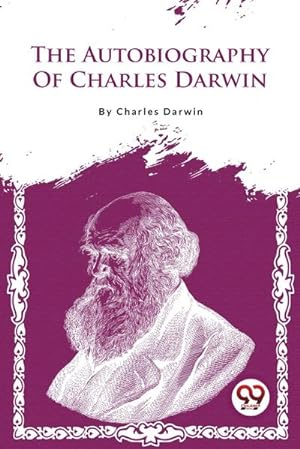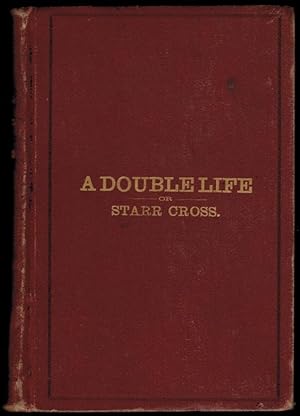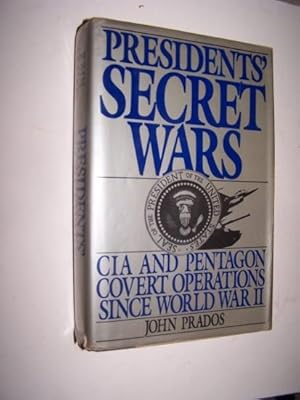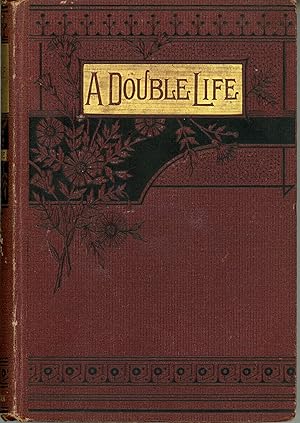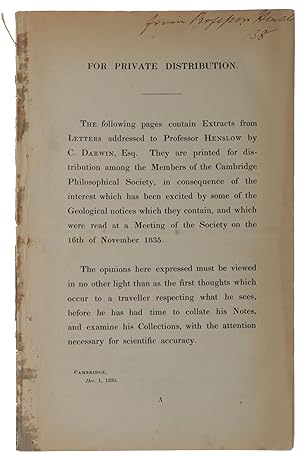Father and Son by John Barlow (5 results)
Product Type
- All Product Types
- Books (5)
- Magazines & Periodicals
- Comics
- Sheet Music
- Art, Prints & Posters
- Photographs
- Maps
-
Manuscripts &
Paper Collectibles
Condition
Binding
Collectible Attributes
- First Edition (3)
- Signed
- Dust Jacket (1)
- Seller-Supplied Images
- Not Printed On Demand (4)
Free Shipping
Seller Location
Seller Rating
-
The Autobiography Of Charles Darwin
Published by Double 9 Books, 2023
ISBN 10: 9357481672ISBN 13: 9789357481670
Seller: Smartbuy, Einbeck, Germany
Book Print on Demand
Taschenbuch. Condition: Neu. nach der Bestellung gedruckt Neuware - Printed after ordering - The English naturalist Charles Darwin wrote an autobiography titled The Autobiography of Charles Darwin. Recollections of the Development of my Mind and Character is the title of a text written by Charles Darwin for his family. He claims to have begun writing it about May 28 and finished it by August 3. The work, which included an autobiographical chapter, was published in 1887 by John Murray as part of The Life and Letters of Charles Darwin, five years after Darwin's passing. Francis Darwin, Darwin's son, changed the text that appeared in Life and Letters, deleting key sentences reflecting his father's skepticism about Christianity and God. The missing chapters were eventually added by Nora Barlow, Darwin's granddaughter, in a 1958 edition published to mark the book's 100th anniversary of publication. The Autobiography of Charles Darwin 1809-1882 was the title of this publication, which Collins published in London. restored, along with the initial omissions edited with an appendix and notes by Nora Barlow, his granddaughter. 62 pp. Englisch.
-
A DOUBLE LIFE Or Starr Cross. A Hypnotic Romance.
Published by S.W. Greene's Son, Publisher., New York, 1894
Seller: Thompson Rare Books - ABAC / ILAB, Hornby Island, BC, Canada
First Edition
Hardcover. Condition: Very Good. First Edition, First Printing. First Edition. Octavo, original brown cloth bordered in black on front & rear panels, titled in gilt on front panel & spine. 301 pp. Name in pencil on front free endpaper, dated 1887, cloth somewhat worn & rubbed and with a few stray marks; generally a very good copy. Science Fiction. Starr Cross is a child with paranormal abilities who can hypnotize animals and other children. As he grows up he learns to graft rabbit ears & a horse's tail onto a dog. A cross between a paranormal novel and a superman novel. Weird, and rare. "Occult romance and science fiction. Orphaned at birth, Starr Cross is raised in New York City by the kindly Dr. Hendon. Seemingly incapable of human emotion, as a child Starr demonstrates incredible mesmeric powers and a keen intellect, performing macabre surgical experiments on his pets, such as grafting rabbit ears and a horse's tail onto one of his dogs. After learning of Starr's existence when the boy is a teenager, John Barlow, Starr's biological father, takes him under his care. A powerful mesmerist and gifted scientist, Barlow has fashioned a number of remarkable creations, including an electric 'life-belt' that has prevented him from aging, antigravity straps that make heavy objects light as a feather, and statues constructed from human corpses in which he has arrested all decay. Barlow also keeps his servants in mesmeric trances in order to exert complete control over them; one, Zeno, functions not only as an assassin but also as a human closed-circuit camera via induced clairvoyance that allows Barlow to spy on his enemies. Obsessed with discovering immortality and with Starr at his side, Barlow plans to reanimate a criminal's corpse using electricity and blood transfusions, but he is killed when an experiment involving unstable gases mortally wounds him. Hoping to restore Barlow to life, Starr preserves his father's body and continues their experiments, occasionally using human subjects, until he successfully revives the dead criminal who unfortunately is nothing more than a mindless automaton. Starr also succeeds in constructing an electronic device using wires, lenses, and mirrors so he can watch his own mind-controlled servants' clairvoyant impressions of people and places on a large screen, similar to a television. Tragedy strikes when Starr unexpectedly learns he has been subject to intense periods of somnambulism during which he lives for weeks at a time as a humble country laborer who is happily married and has a young daughter. Prefiguring not only weird menace pulps but also the superman theme found in much early twentieth-century science fiction, A DOUBLE LIFE OR STARR CROSS AN HYPNOTIC ROMANCE is both remarkable and ridiculous, marred by unnecessary sermonizing about spiritualism, social reform, the nature of electricity, and the redeeming power of a good woman's love. There are aspects of this book that are as imaginative as Bodkin's A MODERN MIRACLE (1902), but the book itself is very mediocre despite having some great ideas. Even so, it has some fine chapters. If Chase had edited this work into a novella, he might have had a minor genre classic on his hands instead of a curiosity." - Boyd White.
-
PRESIDENTS' SECRET WARS CIA and Pentagon Covert Operations Since World War II
Published by William Morrow & Co, New York, 1986
ISBN 10: 068805384XISBN 13: 9780688053840
Seller: Antiquarian Bookshop, Washington, DC, U.S.A.
Book First Edition
Hardcover. Condition: Very Good. Dust Jacket Condition: Very Good. First Edition; First Printing. 480 pages; Overall clean and tight in original binding in very good dustjacket (price-clipped). Inscribed on ffep to Kermit Roosevelt from Jonathan Roosevelt. Kermit "Kim" Roosevelt, Jr. (1916 - 2000) was the grandson of President Theodore Roosevelt and was the mastermind of the Central Intelligence Agency's Operation Ajax, which orchestrated the coup against Iran's democratically-elected Mohammed Mossadegh administration, and returned Mohammad Reza Pahlavi, the Shah of Iran, to Iran's Peacock Throne in August 1953 for the purpose of returning Western control of Middle Eastern oil supplies. These events are covered in this book on pages 91-107, which are a bit worn and have a couple of Roosevelt's notations. On the ffep is the following fascinating inscription from Jonathan Roosevelt (Kim's son) who also served with the CIA (recruited in 1960s). The inscription reads: "For our Pater Familias / During the years 1966-1973 I learned directly from those who served with you how respected you were by them and how much liked and missed. Their comments and affection were a nice experience for me. / Yours has been an active and fulfilled life and through the last forty-six years you have also found the time to be a great father. / Thanks & Love / Jonathan & Jae [ Jae Barlow, Jonathan's first wife] 1986.
-
A DOUBLE LIFE OR STARR CROSS AN HYPNOTIC ROMANCE
Published by S. W. Green's Son, New York, 1884
Seller: Currey, L.W. Inc. ABAA/ILAB, Elizabethtown, NY, U.S.A.
First Edition
Octavo, pp. [1-2] [1-3] 4 [5] 6-301 [302: blank], flyleaves at front and rear, original decorated brown cloth, front and spine panels stamped in black and gold, floral patterned endpapers. First edition. "Occult romance and science fiction. Orphaned at birth, Starr Cross is raised in New York City by the kindly Dr. Hendon. Seemingly incapable of human emotion, as a child Starr demonstrates incredible mesmeric powers and a keen intellect, performing macabre surgical experiments on his pets, such as grafting rabbit ears and a horse's tail onto one of his dogs. After learning of Starr's existence when the boy is a teenager, John Barlow, Starr's biological father, takes him under his care. A powerful mesmerist and gifted scientist, Barlow has fashioned a number of remarkable creations, including an electric 'life-belt' that has prevented him from aging, antigravity straps that make heavy objects light as a feather, and statues constructed from human corpses in which he has arrested all decay. Barlow also keeps his servants in mesmeric trances in order to exert complete control over them; one, Zeno, functions not only as an assassin but also as a human closed-circuit camera via induced clairvoyance that allows Barlow to spy on his enemies. Obsessed with discovering immortality and with Starr at his side, Barlow plans to reanimate a criminal's corpse using electricity and blood transfusions, but he is killed when an experiment involving unstable gases mortally wounds him. Hoping to restore Barlow to life, Starr preserves his father's body and continues their experiments, occasionally using human subjects, until he successfully revives the dead criminal who unfortunately is nothing more than a mindless automaton. Starr also succeeds in constructing an electronic device using wires, lenses, and mirrors so he can watch his own mind-controlled servants' clairvoyant impressions of people and places on a large screen, similar to a television. Tragedy strikes when Starr unexpectedly learns he has been subject to intense periods of somnambulism during which he lives for weeks at a time as a humble country laborer who is happily married and has a young daughter. Prefiguring not only weird menace pulps but also the superman theme found in much early twentieth-century science fiction, A DOUBLE LIFE OR STARR CROSS AN HYPNOTIC ROMANCE is both remarkable and ridiculous, marred by unnecessary sermonizing about spiritualism, social reform, the nature of electricity, and the redeeming power of a good woman's love. There are aspects of this book that are as imaginative as Bodkin's A MODERN MIRACLE (1902), but the book itself is very mediocre despite having some great ideas. Even so, it has some fine chapters. If Chase had edited this work into a novella, he might have had a minor genre classic on his hands instead of a curiosity." - Boyd White. Bleiler (1978), p. 42. Not in Reginald (1978; 1992). Wright (III) 994. Cloth worn at spine ends and corner tips, lacks the front free endpaper, a sound, good copy. (#165795).
-
For Private Distribution. The following pages contains extracts from Letters addressed to Professor Henslow by C.Darwin, Esq. They are printed for distribution among the members of the Cambridge Philosophical Society .
Published by [the University Press for the Cambridge Philosophical Society, Cambridge, 1835
DARWIN'S FIRST SEPARATELY PRINTED WORK - INSCRIBED. First edition, very rare, inscribed by John Stevens Henslow, of Darwin's first separately printed work and his first account in print of his discoveries on the Beagle. "During his five-year voyage on HMS Beagle, Darwin maintained a correspondence with John Stevens Henslow, his mentor in natural history and lifelong friend; it was Henslow who had obtained for Darwin the post of ship's naturalist on the Beagle. The present pamphlet contains extracts made by Henslow from ten of Darwin's letters" (Norman). Henslow had this pamphlet printed without Darwin's knowledge for distribution amongst the members of the Cambridge Philosophical Society "in consequence of the interest which has been excited by some of the Geological notices which they contain, and which were read at a Meeting of the Society on the 16th of November 1835" (p. [1]), an act which secured Darwin's reputation with the scientific community even before his return to England in October, 1836. Freeman states that 'it has always been assumed that it was issued . in December 1835, and this is probably so, but I have not seen a copy with a dated ownership inscription or accession stamp for that year.' The pamphlet was printed without Darwin's knowledge; when he learned of it he confessed himself 'a good deal horrified' at Henslow making public 'what had been written without care or accuracy . but, as the Spaniard says, 'No hay remedio''" (Barlow (ed.), Charles Darwin and the Voyage of the Beagle, pp. 140-142)" (Norman). "Darwin, however, was mollified when he learned from his sister that the booklet had been well received and that Henslow had told the Darwin family that young Charles would surely be placed 'among the first naturalists of the day.' He was particularly gratified to learn that his father, who had had doubts about Charles's decision to pursue a career in natural history, 'did not move from his seat till he had read every word of your book . he liked so much the simple clear way you gave information'" (Gibson, The Spirit of Inquiry: How one extraordinary society shaped modern science, pp. 89-90). "Despite Henslow's reservations about the evolutionary ideas put forward in Origin - he thought Darwin had 'pressed his hypothesis too far' -the two men remained friends to the end of Henslow's life; more than 140 letters between them survive. Darwin continued to rely on Henslow for information on a variety of plants, and wrote of him after his death 'a better man never walked this earth'" (Darwin Correspondence Project). A proof copy with some twenty corrections in pencil was sold by Sotheby's on 13 March 1973 (lot 404), and since then only four other copies have sold at auction, including a copy presented by Henslow toOxford's Ashmolean Natural History Society. Provenance: Inscribed at the head of the first page 'from Professor Henslo[w] / [18]38'; Sir Geoffrey Keynes, surgeon and bibliophile (1887-1982), ownership inscription on folding case dated 1937; his son (and Charles Darwin's great-grandson), Prof. Richard Keynes (1919-2010), physiologist and Darwin scholar. "Darwin came to know Henslow through his attendance at his scientific talks and outings at Cambridge University. He had heard of Henslow through his brother Erasmus who greatly revered him as a man of scientific brilliance and integrity. Inspired by Henslow he soon became a visitor to Henslow's house and subsequently met the scientific fraternity. "The British Admiralty Hydrographer of the Navy, Francis Beaufort, was part of the Cambridge network, and keen to promote science. When organising the second survey voyage of HMS Beagle, he took up captain Robert FitzRoy's suggestion of taking along a geologist, and asked his friend the mathematician George Peacock to 'recommend a proper person to go out as a naturalist with this expedition.' Peacock offered the place to the Reverend Leonard Jenyns, who got as far as packing his clothes before having second thoughts. Henslow thought of going, but his wife 'looked so miserable' that he turned it down. "Henslow obviously rated Darwin highly, though at the time science was not a formally recognised subject at Cambridge. Henslow replied to Peacock that Darwin was 'the best qualified person I know of who is likely to undertake such a situation', and then wrote a letter to Darwin who was then on a field trip in Wales studying practical geology with Adam Sedgwick (Professor of Geology). When Darwin returned to Shrewsbury on 29 August 1831 he found the letter from Henslow telling him of the offer. His father was opposed to the idea, so Darwin turned it down, but his uncle overcame the objections, and on 1 September Darwin accepted the self-funded position. "Preparations were quickly made. Darwin insisted that his collections would be under his own control, subject to them going to a suitable public body. Henslow had hopes for the small Cambridge Philosophical Society museum, but Darwin diplomatically said new finds should go to the 'largest & most central collection' rather than a 'Country collection, let it be ever so good.' FitzRoy arranged transport of specimens to England by the Admiralty Packet Service, and Henslow agreed to store them at Cambridge. Darwin confirmed with him arrangements for land carriage from the port. "After delays, the Beagle set off on 27 December 1831. They visited Atlantic islands, then reached South America on 4 April 1832. Darwin, delighted by his geological findings, collections of organisms and by the sights of the tropics, waited until they were at Rio de Janeiro to write the first of a series of letters to Henslow. "Extracts were taken from ten letters: On 18 May, staying onshore in a cottage at Botafogo near Rio de Janeiro, Darwin wrote summarising his research since leaving England. On 15 August he wrote from Montevideo about specimens collected in tropical forests, and described the first box of specimens, which he was sending by the Admiralty.


